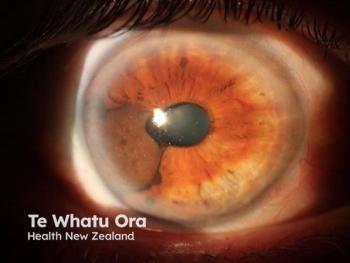
Multiple Myeloma May Increase Incidence of Melanoma
A poster presented at the 2022 American College of Mohs Surgery Annual Meeting not only suggested a link between multiple myeloma and a heightened rate of melanoma, but also demonstrated potential for higher overall mortality rates.
Patients with multiple myeloma (MM) may be more likely to develop melanoma than the general population, according to a poster presented at 2022 American College of Mohs Surgery Annual Meeting. They also may face a higher overall but not melanomas-specific mortality rate, the findings showed.
These results were based on an analysis of publicly available data from the Surveillance, Epidemiology, and End Results (SEER) 18 Registries, November 2020 submission. The study assessed data on 79,174 patients with MM, 261 of whom developed at least 1 melanoma.
Factors the researchers examined in this cohort of 177 men and 84 women included: sex, age at MM diagnosis, race, Hispanic origin, household income, urban versus rural geographic location, anatomic location of the tumor(s), Breslow thickness, all-cause mortality, melanoma-specific mortality, and survival duration.
The summary of that examination featured in the poster showed:
1. Melanoma incidence was higher in patients in the following categories:
- 12-119 months post-M/M diagnosis (P< .02)
- Most races (P 0.001 for White, Black, and non-Hispanic patients)
- Age 50-64 (p < .01)
- Household income of $75.000 or greater (Observed/expected (O/E) ratio=1.51; P < .001)
- Metropolitan counties (O/E=1.29: P< .001).
2. Melanoma patients with MM vs all melanomas demonstrated:
- Thicker tumors, with 23.5% of Breslow depth >1 mm vs 16.2% (P< .001).
- Independent predictors of melanoma-specific mortality including age of 80 years or older, White race, and tumors with Breslow depth >1 mm.
- Increased all-cause mortality/shorter overall survival time (P< .001), but not melanoma-specific mortality.
- A trend towards shorter overall survival (12.5 vs 32.9 months (P= .16).
Using this data, the authors concluded that, “Compared with the general population, patients with MM appear to demonstrate a higher incidence of melanoma and overall mortality.”
They also identified some other highlights. “Incidence trends were significant in female patients, White and Black race, non-Hispanic patients, patients with household incomes of $75,000 or more annually, and patients from metropolitan areas,” the authors wrote. Evaluated against all melanoma patients, those with MM were more likely to develop more melanomas on their trunks/extremities and to have thicker melanomas.
“The link between melanoma and chronic lymphocytic leukemia and lymphomas had been previously reported, but little was known about the prevalence and characteristics of melanoma in multiple myeloma,” noted the authors. “Our study sought to better understand the diagnosis of melanoma among patients with multiple myeloma.”
Reference
Singh P, Tomtschik J, Ibrahim S. Incidence and prognosis of melanoma in patients with multiple myeloma. Poster presented at 2022 American College of Mohs Surgery Annual Meeting, held May 12-15, 2022, in Philadelphia, Pennsylvania.
Newsletter
Like what you’re reading? Subscribe to Dermatology Times for weekly updates on therapies, innovations, and real-world practice tips.

















